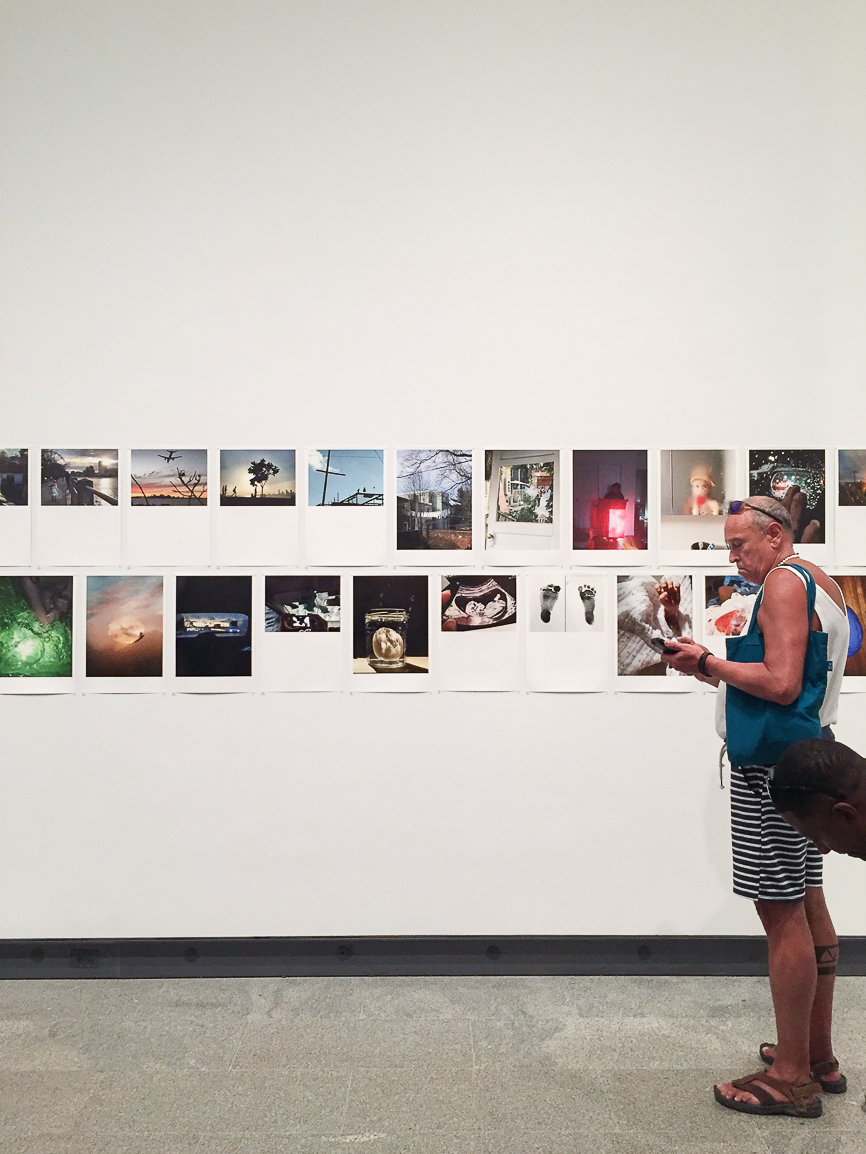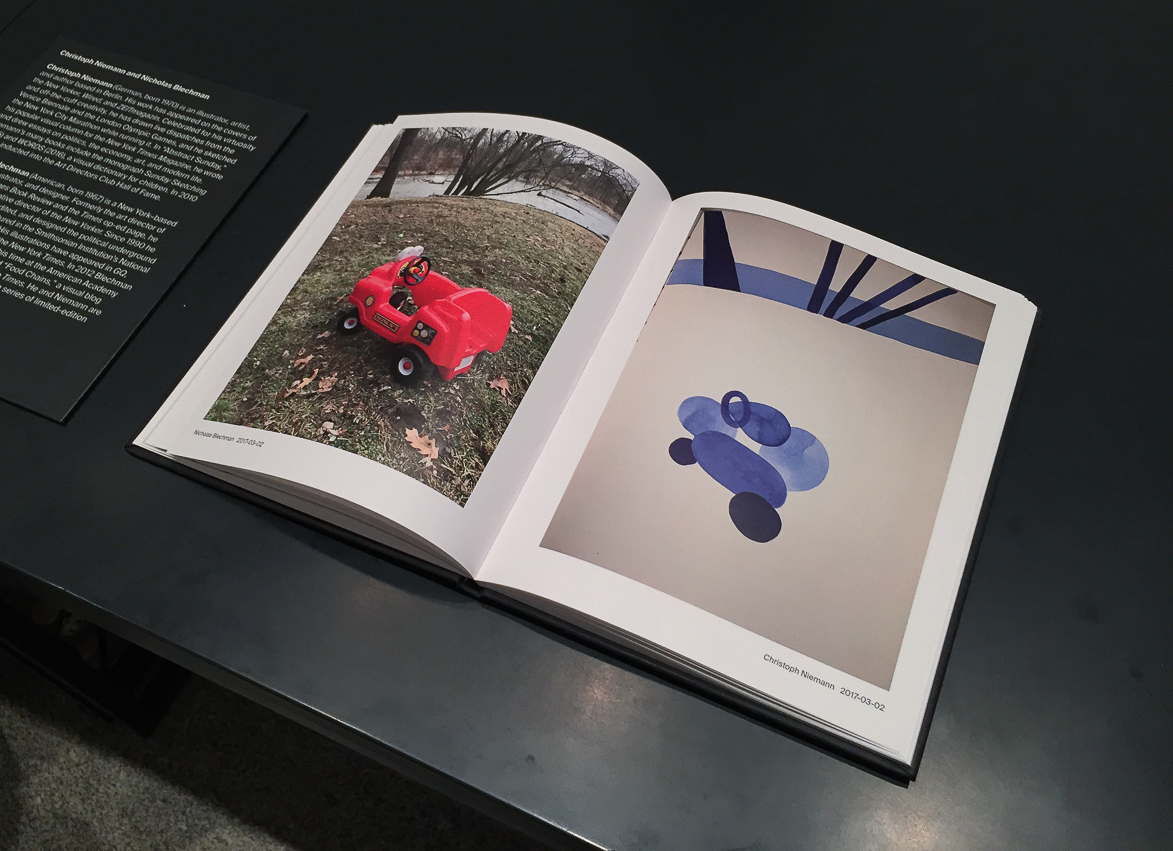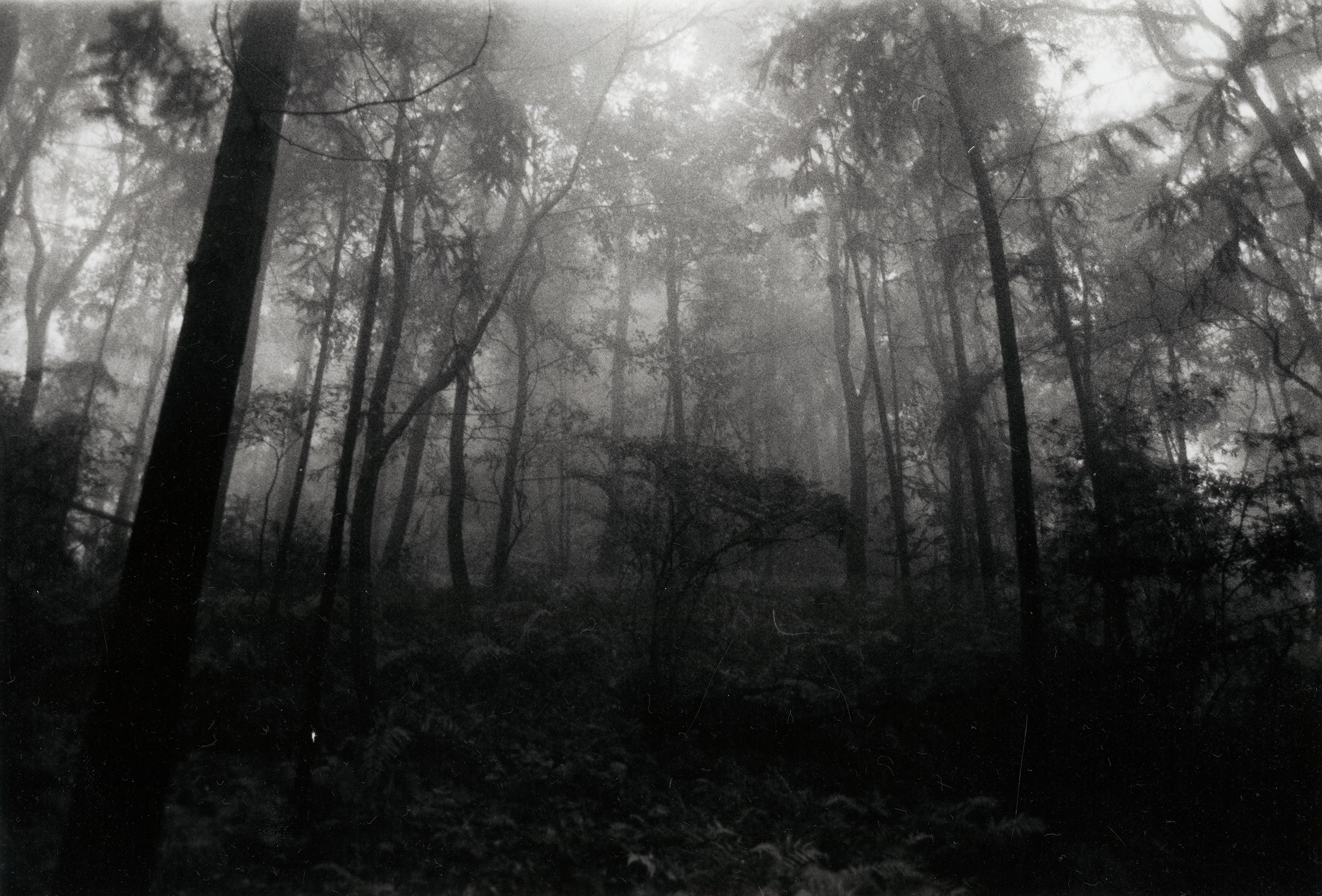Fine Art Through the iPhone

'Talking Pictures: Camera-Phone Conversations Between Artists' will be open through December 17th, 2017.
Stay informed on our latest news!

'Talking Pictures: Camera-Phone Conversations Between Artists' will be open through December 17th, 2017.
















Yuhan’s latest exhibition of photo and video work titled 窗子外 Outside the Window, Inside the Tank 鱼缸里 takes its namesake from what could’ve been a mundane encounter. A month after moving to New York City from Chengdu, China, they stumbled across an abandoned fish tank left curbside. It reminded them of “the rotating fish in a tank that faded into the background of their mother’s home in Chengdu”, a thread connecting childhood familiarity that transformed into a symbol of greater significance in adulthood. A tank is a world within a world; a microcosm secluded from the broader chaos of the outside. Since then Yuhan has captured the other kinds of “fish tanks” closest to them in their photography and short films. Not literal ones necessarily– but intimate confined spaces in Chengdu and NYC where time stands still.
In the midst of taking snapshots of loved ones, Yuhan decided to turn their tender but examining lens on themselves. They realized shooting self-portraits unraveled a deeper understanding of their own nonbinary gender and queer sexuality. Yuhan admits in one of their short films “I hide from looking at my own body.” Yet, in the seclusion of their room which doubles as a dark room, Yuhan began to develop their first nude photos chronicling the subtle wounds; bitten cuticles, bruises, and scrapes they’ve accumulated involuntarily, once again documenting the things people choose to hide.
窗子外 Outside the Window, Inside the Tank 鱼缸里, debuted at FAR-NEAR Studio Hours a gallery in Chinatown focused on expanding the art world's view of Asia and Asian artists curated by Lulu Yao Gioiello. The event merged Yuhan’s works from the past three years, including 70 photographs, three short documentaries, and one installation. There was something uncanny about the gallery’s atmosphere – from the dollar store teal green curtains obscuring every window to the clusters of framed photos mimicking how photos of relatives are displayed in one’s childhood home, to the darkened lighting that was both disorienting and cozy. All these details were meticulously chosen to imitate the rooms depicted in Yuhan’s films and photography. In other words, the audience was invited to Yuhan’s “fishtank”, to share the odd balance of comfort and unease of being known intimately. We talked to Yuhan at Cafe Reggio to understand how their latest body of work came into being.


Ora Margolis— Were any memories/childhood experiences you had in Chengdu important to how you've developed as an artist?
Yuhan Cheng— Growing up in Chengdu, especially in a military household, shaped and gave me a source of contention how I understood my identity. There was always a sense of conflict when it came to my body and feeling like I didn’t quite fit the expectations around me. This tension has been a driving force in my practice, pushing me to explore identity and belonging in my work.
Tell us a bit about your latest exhibition Outside the Window, Inside the Tank at Far. What headspace were you in when taking these photos?
YC— Outside the Window, Inside the Tank is about the fluidity of self; our bodies, our environments, and our identities. The idea of water as both a symbol of confinement and freedom is central to the photos and film that comprise the exhibit. This fluidity much like how I see my experience moving between Chengdu and New York, where similar feelings follow me no matter where I am. Water mirrors the body, the frame, and the room, which are all containers of the self.
Previously, you’ve said you wanted the exhibition space to look "like your room". How did you make that happen and why is your NYC room important to you?
YC— My room in NYC is an extension of my identity. It’s where I feel vulnerable and where I explore myself most openly. It’s a manifestation of my sense of self. I recreated certain elements in the exhibition—the green sheer curtains, the dollar store shower curtain with bubbles, and the center installation depicted a self-portrait deteriorating in water, reminiscent of a fish in a tank. This room, like any other room or container, magnifies the tension of self-exploration.
Has your idea or comfort with your gender identity and /sexuality changed since you’ve delved into photography?
YC— Yes. The process of photography and filming has been a mirror to my own understanding of self. Initially, I was exploring my friends’ identities through the lens, but slowly, it became a tool to confront and understand my own queerness and gender identity. The process of photographing my queer friends and then myself allowed me to come to terms with who I am.
How did you and Lulu Yao of FAR-NEAR Studio meet, and what makes her a good collaborator?
YC— We first connected when I reached out with my series Princess of Funan River. Lulu understood the struggles and complexities in the work and she invited me to expand on those ideas with her. Our collaboration has worked because Lulu truly resonates with the themes I’m drawn to, like fluidity, transformation, and the intimacy of navigating belonging.



After completing Fish Tank and Remnants of an Amateur Film, what kind of movie do you want to make next?
YC— Right now, I’m more focused on writing. I need to understand what I want to say before making another film. Writing helps me find clarity;it’s a crucial part of my process.
What kind of camera do you use and why?
YC— I use a Canon AE-1. I started with it and I still love it. It's small, spontaneous, easy to use, and light. It allows me to capture moments naturally without overthinking.
What's your biggest fear?
YC— Being disconnected from my sense of self, from others, and from the things I love.
When do you feel most like yourself?
YC— It’s during those fleeting moments when I complete a project. That feeling fades quickly, leaving me searching for the next project to reconnect with that sense of fulfillment.
How do you want people to feel when they interact with your art?
YC— I want them to feel whatever resonates with them. I don’t want to prescribe the experience; it should feel right for each person.
Your work focuses on the close knit communities that surround you or various metaphorical “fish tanks”. What communities do you feel closest to?
YC— The queer artist community, both in Chengdu and NYC, has been a source of comfort and understanding for me. There’s something about shared struggles and shared creative language that feels like home.
What's the biggest difference between living life as a queer artist in NYC and in Chengdu?
YC— In both NYC and Chengdu, I’m learning more about myself. NYC offers a sense of freedom, while Chengdu is home, a place of comfort and history. Neither place defines me but both are significant parts of my path.
What are your next moves/goals?
YC— I want to continue exploring both film and photography, expanding my narrative style and experimenting across mediums. During my show, I found new ways of seeing my photographs such as by adding a window screen between frames or letting a self-portrait fade and grow mold in water. These approaches allowed me to see my work not just as 2D images but as 3D objects.
I want to keep pushing the boundaries of how photo and film can interact, and I’m also interested in trying photojournalism. My focus remains on collaborating across mediums and continuing to accumulate experiences that I can translate into sincere honest work.














Why did you choose the name Veins Books?
The name Veins Books felt like a natural choice. I wanted something simple, almost intuitive. I spend hours in bookstores, often with my arms resting, and the veins in my arms become visible. It resonates with that image of veins and books linked physically. There’s also a nod to The Velvet Underground. In their song Heroin, Lou Reed sings, When I put a spike into my vein, and that line stuck with me. It aligns with themes I’m exploring in my research. There wasn’t a long, romantic process to it—it just felt like the right fit.
How did you start collecting and selling books?
I developed this fascination with books back in high school, around age 17. I went to an art high school in Padua, Italy and they had an amazing library with some pretty unconventional titles, you could say. They had first editions, like Arte Povera by Germano Celant, "Multiples" by Joseph Beuys, The Fourth Sex, by Raf Simons. Gorgeous editions. That library was my entry point to theseartists and to informal art, Arte Povera, American Minimalism and so on. Later, I came across American land artists like Richard Long and Walter De Maria. My interest started mainly with visual art and then widened into other fields, eventually leading me to create Veins Books. But it all started with a deep connection to the art of the 1950s-70s.
So your passion for publishing really took off during that time.
It was all about research back then. I always had this drive to look at, photograph, and photocopy these books—and, of course, to own them. Later, when I had more financial means, I began collecting them, partly to prepare for what I hoped would become my career. But mostly, it was for research, since I was also creating my own visual art, primarily two-dimensional work, like compositions with tar, fire, and pencil drawings on paper. I sought inspiration in both words and images. So yes, research and image regeneration were pivotal for me: the collection grew, and eventually, I felt the need to show the path of this research. It’s like this idea in the book "Arte Espansa" by Mario Perniola,where you look at what it means to be an artist today: where all arts blend and yet nothing is singular. It’s a bit like the distinction between inside and outside artists— artists who want to display their work, live off it, pay bills, and sell. It’s this concrete, driven vision that led me to open two open libraries in my small apartment in Milan, opening my doors and curating the space. Initially, because of budget constraints, it was all very DIY, much like Hans- Ulrich Obrist, who curated exhibitions in his New York kitchen.
How and where do you collect books from?
I find them from all over—online shops, eBay, Instagram. Sometimes I’ll see a post about a particular artist or book and go from there. I also try to pick up new books while traveling. I’ve found great ones in Paris, at Boo-Hooray in New York, Motto Books in Berlin, and at the Milan book market every month. It’s really a mix of online and in-person discoveries. There’s no strict formula; it’s an ongoing, instinctual search.
How many books are in your collection right now?
Between 350 and 400.






Do you have any criteria for collecting?
There’s not really a strict criterion. I just go with what feels right and what fits with the collection at Veins Books. I have a particular aesthetic, and there are certain artists I gravitate towards, but I don’t limit myself with hard rules. If I come across a book and it feels like it belongs in the collection, I go for it. It’s an organic process that lets me stay open to new finds and ideas. I’d love to know if there is a book in your collection that holds special significance. It changes often, but Arte Povera by Germano Celant will always be special to Veins, for how it influenced the whole project. I’m also obsessed with certain artists, like Robert Mapplethorpe, Richard Kern, and Larry Clark. Their ability to provoke, to ask questions that challenge the ethics of art—it fascinates me. Celant, with his visionary ability to capture an entire movement with a single term—Arte Povera—probably created the last true art movement, recognizing that those artists could connect in a unified way. That book will always be fundamental. Then there’s Mapplethorpe Early Works, an edition with the “Altars” and other framed compositions, which is one of my favorites. There are others too, like Berlin by Hedi Slimane, with iconic photos from my teenage years, like the one of the boy on the ground with the Mercedes-logo leather jacket, which brings back strong memories. It’s always hard to pick—every book holds a unique meaning.
Any books you can recall having trouble giving up?
There were a few books I took off the price list at the last pop-up in Milan. For instance, in the
office, we call Ann Demeulemeester’s book “the Bible”—it has all the photos from the shows before
Sébastien Meunier took over. That was the first one I took off the shelf because I just couldn’t part
with it. I imagine it’s one of those books that, years from now, I’ll look back on and think, this is the
book I showed during my interview about three and a half years ago. That one was tough to let go
of, for sure. Mapplethorpe: Early Works is another I sold but immediately regretted and had to buy
back. Some books feel like a part of you, and it’s hard to imagine not having them around.
How did you decide to open a pop-up in Milan?
The decision was partly practical—Milan simply made sense. But on another level, it filled a gap. Milan has a few niche bookstores, but nothing quite like what I’m building with Veins. I see Veins as closer to the curated spaces you’d find in New York or Paris. The positive response to the pop-up confirmed that there’s a community here that values this kind of experience. It feels like we’re helping to build a local scene and a space where people can connect over unique works. A few years back, there wasn’t much of a following for this kind of scene in Milan, so I’d often go to Paris to find that vibe, those artists, that outlook. There’s always been a pull toward Paris, Berlin, and London within Europe. But now we’ve realized that this scene does exist in Milan; it’s just that no one had represented it in a cool, grounded way. When we did the first Nausea Twins live event, it was clear that the same people you’d see at La Perle, Le Connétable or PCC in Paris, or at 80mmBar in Berlin, are right here in Milan, too. Milan isn’t just what it’s been in recent years—there’s room for an artist scene that hasn’t been fully recognized yet. I wouldn’t call it a “movement” exactly; it’s more like a space that’s now open, and it’s very real. There are artists, photographers, musicians, brands—all with a desire to establish a vision. And as more people discover it, that vision only gets stronger. Honestly, community is almost everything to us. It’s exciting, even though, at the end of the day, we’re not doing anything revolutionary.
What are your thoughts on the accessibility of artistic knowledge?
Art and fashion often feel elitist. Exclusivity has a certain allure. It works in a lot of cases, and it’s part of the proximity experience. Think of Chrome Hearts, where you can only enter by appointment, two people at a time, with a gate and a bodyguard. That mystique around an artist as this one-of-a-kind figure is compelling because it builds that dream of being that person. But at the same time, if it weren’t accessible, I wouldn’t have been able to form myself. So a bit of exclusivity is good when balanced thoughtfully.
What about Instagram? And what’s next?
Instagram is essential. I love seeing the variety of profiles and how each one personalizes its own space. In my case, it started as an archive of the volumes I owned, and from there, everything started: the pop-up, the e-commerce we’re about to launch. The big goal is to find a permanent space in Milan. I’m also considering doing more pop-ups
abroad. There was almost a chance to go to Los Angeles, but it didn’t quite work out. I’m not rushing; I want to build Veins Books slowly and sustainably. The first pop-up was great, so I’m planning the next one in January during Fashion Week. We’ll see where it goes from there.
I can’t end this interview without complimenting you on the playlist from the Milan pop-up.
Thanks for noticing! Music is an integral part of Veins Books. As I mentioned earlier, there’s a definite influence from the New York scene—the Velvet Underground, CBGB, The Cramps, Richard Hell, Patti Smith, Dead Boys, Television—and, of course, European influences like Public Image Ltd., Siouxie and the Banshees, The Fall and The Clash. These artists all seem to speak the same language as the books in the collection; it’s like flipping through Tulsa by Larry Clark with the perfect song playing in the background. Everything in Veins is about creating that immersive experience, with music adding depth and atmosphere that connect people to the art on a visceral level.






